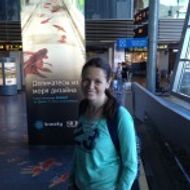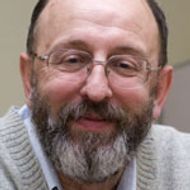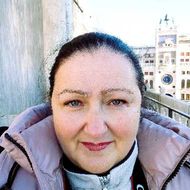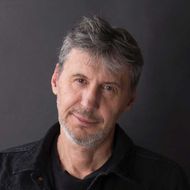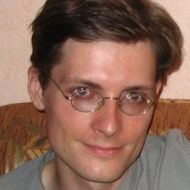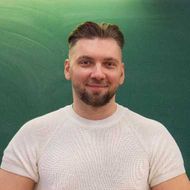- A
- A
- A
- АБB
- АБB
- АБB
- А
- А
- А
- А
- А
- Национальный исследовательский университет «Высшая школа экономики»
- Факультет математики
- Low-dimensional Topology and Algebraic Geometry
-
Факультет
-
Образование
- Образование
- Бакалаврские программы
- Магистерские программы
- Аспирантура
- Программа Math in Moscow
- Программы для учителей и школьников
- Майнор «Математические структуры»
- Календарь школ
-
Подразделения
- Базовые кафедры
-
Научные подразделения
-
- Международная лаборатория теории представлений и математической физики ВШЭ
- Международная лаборатория кластерной геометрии
- Лаборатория алгебраической геометрии и ее приложений
- Международная лаборатория зеркальной симметрии и автоморфных форм
- Научно-учебная лаборатория сложных сетей, гиперграфов и их приложений
- Лаборатория математического образования
-
-
In Memoriam
- Мы помним
-
Виртуальная доска объявлений
Адрес: 119048, Москва,
ул. Усачёва, 6
тел. (495) 916-89-05
тел. (495) 772-95-90 *12725
E-mail: math@hse.ru
Учебный офис:
mathstudyoffice@hse.ru
тел. (495) 624-26-16
тел. (495) 772-95-90 *12713
Telegram каналы:
Канал Студсовета Матфака - @mathhse_council
Канал Деканата - @mathhse_news
Канал Учебного офиса ФМ - @mathhse_study
Канал Матфак внеучебка - @mathhse
ДПО факультета математики:
dpo-math@hse.ru
Проект «Математическая вертикаль»:
math.vertical@hse.ru
ЛМШ факультета математики - Летняя школа для школьников:
math.vertical.school@hse.ru
Редакторы сайта факультета:
Low-dimensional Topology and Algebraic Geometry
Spring 2018
Thursdays 10:30-12:00 Room 326 (Usacheva str. 6)
Syllabus
List of suggested student topics
Organizers:
- Chris Brav chris.i.brav@gmail.com Room 333
- Ash Lightfoot alightfoot@hse.ru Room 309
Current schedule of talks
|
Date |
Speaker |
Topic |
Abstract |
References |
|---|---|---|---|---|
| February 15, 2018 | Semyon Abramyan | Lens Spaces - Part I | The closed, orientable 3-manifolds of Heegaard genus 1 are precisely the lens spaces, which are of the form L (p, q) for relatively prime integers p, q. In this talk, we give L (p, q) is homeomorphic to L (p, q ') if qq' = 1 (mod p). | Knots and Links , Dale Rolfsen; Lectures on the Topology of 3-Manifolds: An Introduction to the Casson Invariant (2nd revised edition) , Nikolai Saveliev |
| February 22, 2018 | Ash Lightfoot | Introduction to the classification of 3-manifolds | It is well-known that closed surfaces are determined by their fundamental group. In this talk we explore to what extent this is true for 3-manifolds. In doing so we introduce the traditional program for classifying 3-manifolds, focusing on the topological aspects. This begins by showing that a closed, orientable 3-manifold has an essentially-unique decomposition into simpler ("prime") pieces, and then using the fundamental group to investigate the possible pieces. | |
| March 1, 2018 | Ash Lightfoot | Introduction to the classification of 3-manifolds (Part 2) | ||
| March 15, 2018 | Pavel Popov | Character Varieties and Heegaard splittings | Let T be a topological space. By a character variety X(T) of T we will understand some moduli space of representations of pi_1(T) in SL(2,C). In the case of a 3-manifold M with a Heegaard decomposition into U_1 and U_2 along a surface S, it turns out that smooth locus of X(S) has a symplectic structure and X(U_1), X(U_2) are Lagrangian subvarieties. In the paper arXiv:1708.00289v1, the authors constructed invariants of M using the "derived Lagrangian intersection" of X(U_1) and X(U_2). This is our motivation. In this elementary talk we will introduce the notion of character varieties, study their tangent spaces, and consider some examples. After that we will describe a symplectic structure on X(S) and show that X(U_1) and X(U_2) are Lagrangian. | |
| March 22, 2018 | Pavel Popov | Character Varieties and Heegaard splittings (Part 2) | In the last talk we introduced a character variety X(Gamma) for a group Gamma. It is a variety of representations of this group into SL(2,C). We calculated the tangent spaces to regular irreducible representations. If T is a topological space, we denote X(pi_1(T)) just as X(T). In this talk we consider the case of a 3-manifold M with a Heegaard decomposition into U_1 and U_2 along a surface S. It turns out that the smooth locus of X(S) has a symplectic structure and X(U_1), X(U_2) are Lagrangian subvarieties. Using intersection theory for X(U_1), X(U_2) we introduce an invariant [Curtis01] lambda(M) of 3-manifolds M which, roughly speaking, counts isolated irreducible representations of pi_1(M). In the end we discuss some results about this invariant and compare it with the more sophisticated invariant of [AM17] which is constructed using the "derived lagrangian intersection" of X(U_1) and X(U_2). | [Curtis01] Cynthia L.Curtis, An intersection theory count of the SL2(C)-representations of the fundamental group of a 3-manifold. [AM17] Mohammed Abouzaid, Ciprian Manolescu, A sheaf-theoretic model for SL(2,C) Floer homology. |
| March 29, April 5, 2018 | Dmitry Zhurbenkov | Introduction to fibred knots | A knot K is fibred if there is a fibration of its complement S^3\K to the circle S^1 that is well-behaved near K. In this talk we will discuss some examples of fibred knots and, after introducing the Alexander invariant and the Alexander polynomial, prove that the latter for a fibred knot is monic. | Knots and Links , Dale Rolfsen; Knot Theory - Proceedings, Plans-sur Bex, Switzerland 1977, Hausmann, JC (Ed.) |
| April 12, 2018 | Chris Brav | Ehresmann’s fibration lemma and monodromy | Ehresmann’s fibration lemma states that a proper submersion p: M —> N is a locally trivial fibration. For example, Seifert fibrations of 3-manifolds. We outline a proof of the lemma, look at some examples, and explain how the lemma implies the existence of a monodromy action of pi_1(N) on the (co)homology of the fibres of p. | |
| April 26, 2018 | Yuri Rudko | The trefoil knot is fibered | We give a constructive proof that the trefoil is fibered. | Knots and Links , Dale Rolfsen |
| May 24, 2018 | Victor Mishnyakov | Introduction to sheaves | The theory of sheaves provides a tool to describe locally defined objects. In this talk we will go over the basic definitions of sheaves, and give examples such as sheaves of solutions of complex ODE's and the computation of basic Cech cohomology. | |
| May 31, 2018 | Andrey Spiridonov | Cech cohomology and the Riemann-Hilbert correspondence | In this talk we will make a further study of sheaf theory. We will introduce Cech cohomology and explicitly compute several examples. We will also compare this construction with singular cohomology. In the conclusion we will recall the Riemann-Hilbert correspondence and demonstrate the sheaf-theoretical approach to studying the monodromy of complex differential equations. | |
| June 7, 2018 | Dasha Poliakova | Local systems | In my talk I will explain the equivalence of categories between locally constant sheaves and pi_1 representations, and locally constant sheaves and flat connections. |
Fall 2017
Thursdays 12:00-13:30 Room 413 (Usacheva str. 6)
List of suggested student topics
Organizers:
- Chris Brav chris.i.brav@gmail.com Room 333
- Ash Lightfoot alightfoot@hse.ru Room 309
Current schedule of talks
|
Date |
Speaker |
Topic |
Abstract |
References |
|---|---|---|---|---|
| October 5, 2017 | Chris Brav, Ash Lightfoot | Organization | ||
| October 12, 2017 | Ash Lightfoot | Heegaard splittings via Morse theory | A 3-dimensional handlebody is an orientable 3-manifold obtained from the 3-ball by attaching handles. In this talk we show that any closed, orientable 3-manifold can be obtained by gluing together two handlebodies along their common boundary. Moreover, we show that such a decomposition of a 3-manifold, called a Heegaard splitting, is unique up to homeomorphism and a certain stabilization operation. (These results are classical, originally due to Reidemeister and Singer.) To do so, we introduce the basics of Morse theory. | Morse Theory , John Milnor; An Invitation to Morse Theory , Liviu Nicolaescu |
| October 19, 2017 | Ash Lightfoot | Heegaard splittings via Morse theory (Part II) | Continued. | |
| November 2, 2017 | Balaram Usov | The mapping class groups of surfaces | In this talk I will define the mapping class group of a surface. We will compute this group for the torus and prove that it is important that this group is based on Dehn twists. In doing so I will define a complex of curves and mention some of its properties. | Knots and Links , Dale Rolfsen; A primer on mapping class groups , Benson Farb, Dan Margalit |
| November 9, 2017 | Roman Krytovsky | Dehn's lemma and the loop theorem | I will prove Dehn's lemma, which roughly says that if you have an embedding of the boundary of a 3-manifold, then you can extend the mapping to an embedding of the whole disk into this 3-manifold. A central part of the proof will be a tower construction due to Papakyriakopoulos. | Knots and Links , Dale Rolfsen; Notes on 3-manifolds , Danny Calegari |
| November 16, 2017 | Roman Krytovsky | Dehn's lemma and the loop theorem (Part II) | Continued. | |
| November 16, 2017 | Balaram Usov | The mapping class groups of surfaces (Part II) | Continued. | |
| November 23, 2017 | Ash Lightfoot | Surgery on a link and Kirby calculus | A fundamental result in low-dimensional topology is the Lickorish-Wallace Theorem, which states that any closed, orientable 3-manifold. Such a 3-manifold can be described by a "Kirby" diagram: a diagram of a link where each component is equipped with an integer. Further, Kirby's theorem states that two such 3-manifolds are homeomorphic if and only if their Kirby moves are related by certain so-called Kirby moves. In this talk, we discuss these results and their relation to Heegaard decompositions. | |
| November 30, 2017 | Ash Lightfoot | Surgery on a link and Kirby calculus (Part II) | Continued from the previous talk. | |
| December 7, 2017 | Tatiana Ovchinnikova | The Jones Polynomial and a conjecture of Tait | There were many difficulties in tabulating knots at the dawn of knot theory. In this talk, we will discuss one of the Tait Conjectures, which were used to add many knots to the tables. The conjecture of states that any reduced, alternating diagram of a knot has the minimal possible number of crossings. Morwen Thistlethwaite, Louis Kauffman and Kunio Murasugi in 1987, using the Jones polynomial. | An Introduction to Knot Theory , WBRaymond Lickorish |
| December 14, 2017 | Yurii Rudko | Kirby diagrams of 4-manifolds | I will talk about a way of understanding and studying 4-manifolds called a Kirby diagram. Any (closed, connected, smooth) 4-manifold can be decomposed into the union of 4-dimensional handles (each diffeomorphic to a 4-dimensional disk) with a single 0-handle. The boundary of the 0-handle is a 3-sphere, so can be considered as R ^ 3 and a point. I will show how this allows us to build the whole framework by drawing a framed link in R ^ 3, that is, a link for which each component is equipped with an integer. | The Topology of 4-manifolds , Robion Kirby; 4-manifolds and Kirby calculus , Andras Stipsicz and Robert Gompf; Knots and Links , Dale Rolfsen; Lectures on the Topology of 3-Manifolds: An Introduction to the Casson Invariant (2nd revised edition) , Nikolai Saveliev |
| December 27, 2017 | Semyon Abramyan | Whitehead's theorem for four-manifolds | In this talk, we define the intersection of a closed, orientable four-manifold, and prove a Whitehead's theorem, which states that the classifies closed, simply-connected four-manifolds up to a homotopy type. Can also be read from a Kirby diagram, and give applications. | The Topology of 4-manifolds , Robion Kirby; 4-manifolds and Kirby calculus , Andras Stipsicz and Robert Gompf; The Wild World of 4-Manifolds , Alexandru Scorpan |
| December 27, 2017 | Ilya Levin | The Unknotting and Non-cancellation theorems of knots | In this talk, we will prove two fundamental results in three-dimensional topology. The first, the Unknotting Theorem, states that a knot is trivial if and only if the fundamental group of its complement is isomorphic to the integers. The second, the non-cancellation theorem of the Connected Sums, the states that are connected with each other and if only knots are trivial. To prove them, our main tool will be the Loop Theorem (whose proof was given by Roman Krutovskiy in previous meetings). | Knots and Links , Dale Rolfsen |
| TBA | Semyon Abramyan | The algebraic topology of lens spaces | TBA | Knots and Links , Dale Rolfsen; Lectures on the Topology of 3-Manifolds: An Introduction to the Casson Invariant (2nd revised edition) , Nikolai Saveliev; Introduction to Combinatorial Torsions , Vladimir Tureuv; Lecture Notes in Algebraic Topology , James Davis and Paul Kirk |
| TBA | Alexander Dunaykin | Trisections of 4-manifolds | TBA | Trisecting 4-manifolds , David Gay and Robion Kirby |
| TBA | Denis Tereshkin | Morse homology | TBA | An Invitation to Morse Theory , Liviu Nicolaescu |
- О ВЫШКЕ
- Цифры и факты
- Руководство и структура
- Устойчивое развитие в НИУ ВШЭ
- Преподаватели и сотрудники
- Корпуса и общежития
- Закупки
- Обращения граждан в НИУ ВШЭ
- Фонд целевого капитала
- Противодействие коррупции
- Сведения о доходах, расходах, об имуществе и обязательствах имущественного характера
- Сведения об образовательной организации
- Людям с ограниченными возможностями здоровья
- Единая платежная страница
- Работа в Вышке
- ОБРАЗОВАНИЕ
- Лицей
- Довузовская подготовка
- Олимпиады
- Прием в бакалавриат
- Вышка+
- Прием в магистратуру
- Аспирантура
- Дополнительное образование
- Центр развития карьеры
- Бизнес-инкубатор ВШЭ
- Образовательные партнерства
- Обратная связь и взаимодействие с получателями услуг
-
http://www.minobrnauki.gov.ru/
Министерство науки и высшего образования РФ
-
https://edu.gov.ru/
Министерство просвещения РФ
-
http://www.edu.ru
Федеральный портал «Российское образование»
-
https://elearning.hse.ru/mooc
Массовые открытые онлайн-курсы
- © НИУ ВШЭ 1993–2026 Адреса и контакты Условия использования материалов Политика конфиденциальности Карта сайта
- Редактору
